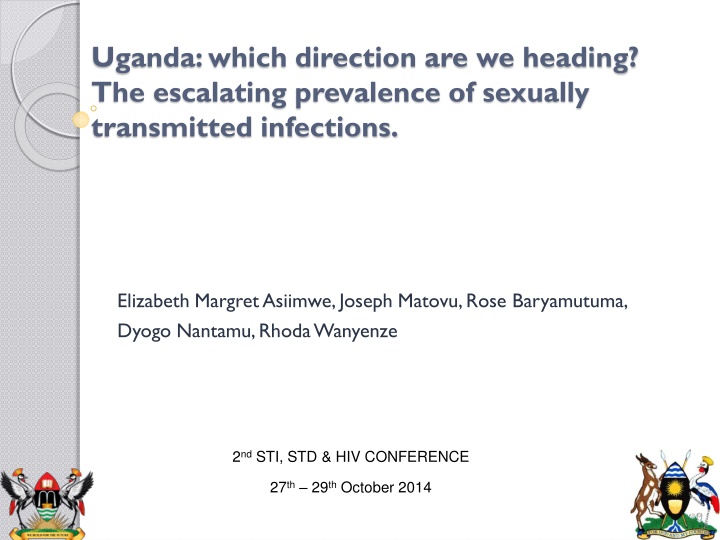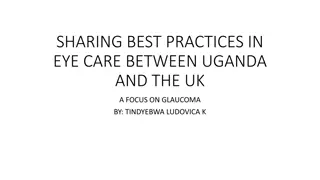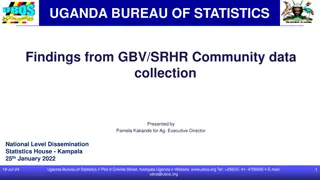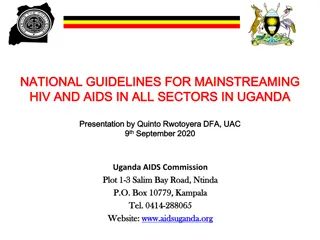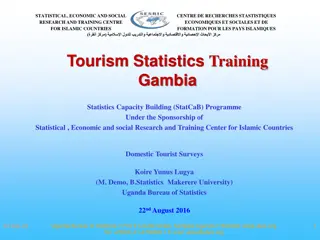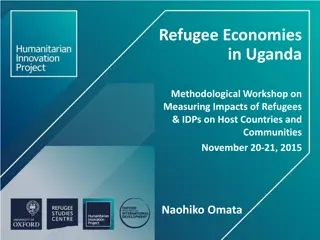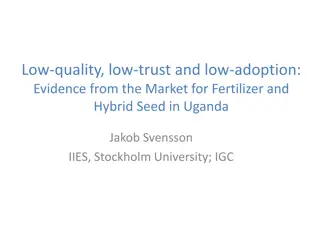STI Prevalence Trends in Uganda: Insights from Demographic Surveys
The escalating prevalence of sexually transmitted infections (STIs) in Uganda is a growing concern, impacting HIV infection rates and public health outcomes. This paper analyzes STI prevalence data from Uganda Demographic and Health Surveys (UDHS) conducted in 2001, 2006, and 2011. Results reveal variations by gender, region, education level, marital status, and urban/rural residence, providing vital insights for targeted interventions to address the STI burden in Uganda.
Download Presentation

Please find below an Image/Link to download the presentation.
The content on the website is provided AS IS for your information and personal use only. It may not be sold, licensed, or shared on other websites without obtaining consent from the author.If you encounter any issues during the download, it is possible that the publisher has removed the file from their server.
You are allowed to download the files provided on this website for personal or commercial use, subject to the condition that they are used lawfully. All files are the property of their respective owners.
The content on the website is provided AS IS for your information and personal use only. It may not be sold, licensed, or shared on other websites without obtaining consent from the author.
E N D
Presentation Transcript
Uganda: which direction are we heading? The escalating prevalence of sexually transmitted infections. Elizabeth Margret Asiimwe, Joseph Matovu, Rose Baryamutuma, Dyogo Nantamu, Rhoda Wanyenze 2nd STI, STD & HIV CONFERENCE 27th 29th October 2014
Background Sexually transmitted infections (STIs) have been controlled in the developed world In sub-Saharan Africa the burden continues to grow. STIs increase the likelihood of HIV infection and various complications; a study in Mwanza, Tanzania, demonstrated that STIs accounted for almost half of new HIV infections. High STIs prevalence may jeopardize getting to ZERO new HIV infections by 2015 This paper presents the STI burden to guide interventions
Methodology We reviewed Uganda Demographic and Health Survey (UDHS) reports of (2001, 2006 and 2011) for STI prevalence. The population surveyed per year was; 9208 (2001), 11,034 (2006) and 11,820 (2011). We extracted data of the people with self reported STI We present the results by; gender, country s geographic regions, residence (rural or urban), wealth categories, marital status.
Results STI prevalence between 2001 & 2011 30 26.5 25 21.1 20 Percentage 16.6 2001 2006 2011 14 15 12.5 10 5.5 5 0 Men Women
STI prevalence by region among Men 30 25 20 Percentage 15 2006 2011 10 5 0
STI prevalence by region among Women 40 35 30 25 Percentage 20 2006 2011 15 10 5 0
STIs prevalence among men & women by education status 30 25.9 25 23 21.3 19.3 20 Percentage 16.2 15 No education Secondary (+) ed 10.4 9.6 10 8.3 5 0 Men Women Men Women 2006 2011
STI prevalence by marital status 30 25 20 Percentage 2001 2006 15 2011 10 5 0 Nev Married Married Divorced, S&W Nev Married Married Divorced, S&W Men Women
STI prevalence by residence (Urban & Rural) 35 30 25 Percentage 20 2001 2006 2011 15 10 5 0 Urban Rural Urban Rural Men Women
STI prevalence by Wealth quintile 35 30 25 percentage 20 15 2006 2011 10 5 0 Fourth Fourth Lowest Lowest Middle Middle Second Highest Second Highest Men Women
Treatment seeking for STIs Women Sought Rx 39% Didn t seek Rx 61% Men 30% 70% Sought Rx Didn t seek Rx
Conclusion Persistent increase in the prevalence of STI in the country especially in the eastern region, Married, divorced, widowed & separated wealthier women, The surging trend calls for an urgent need for the country to re- examine STI preventive programs
